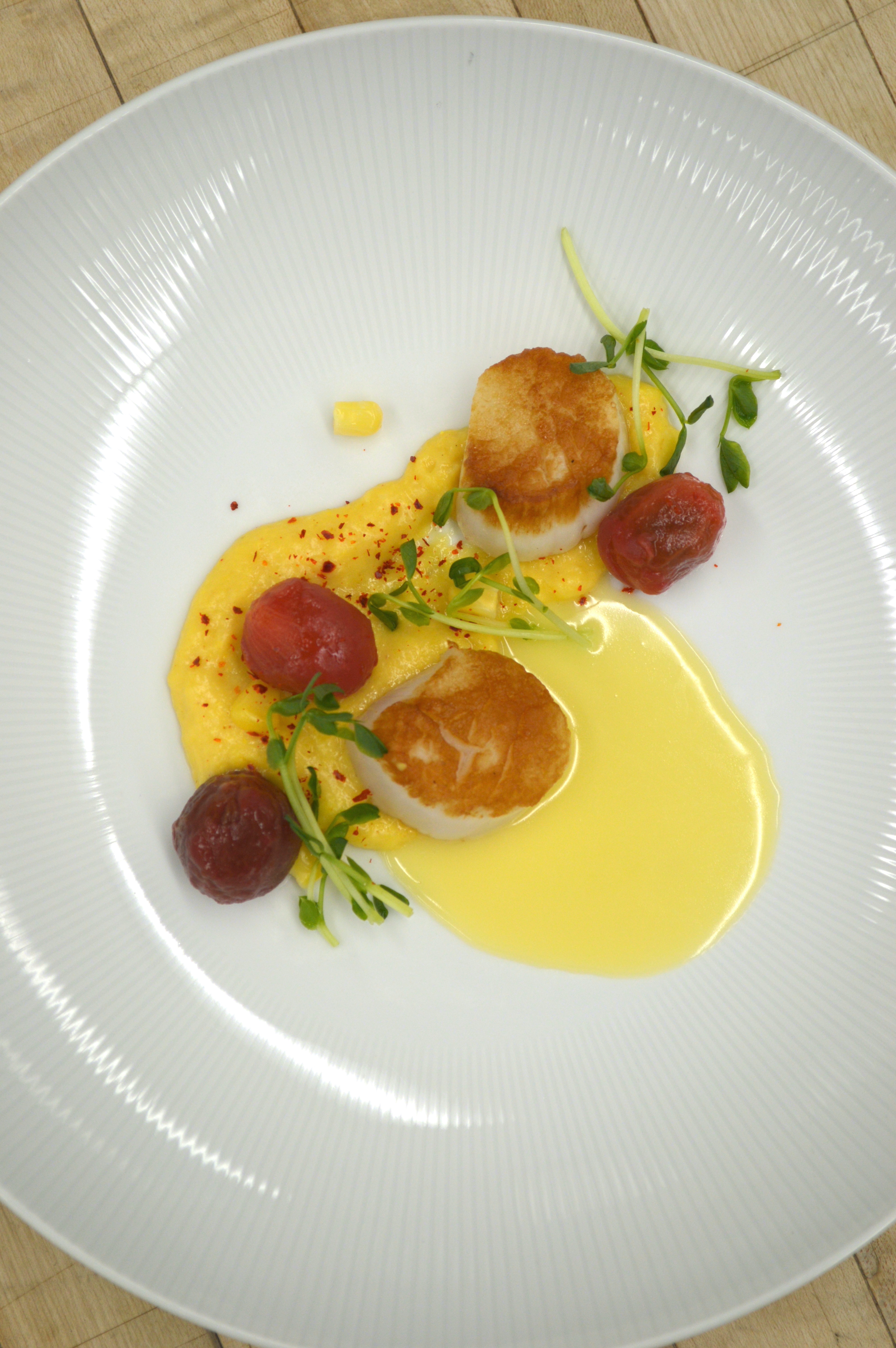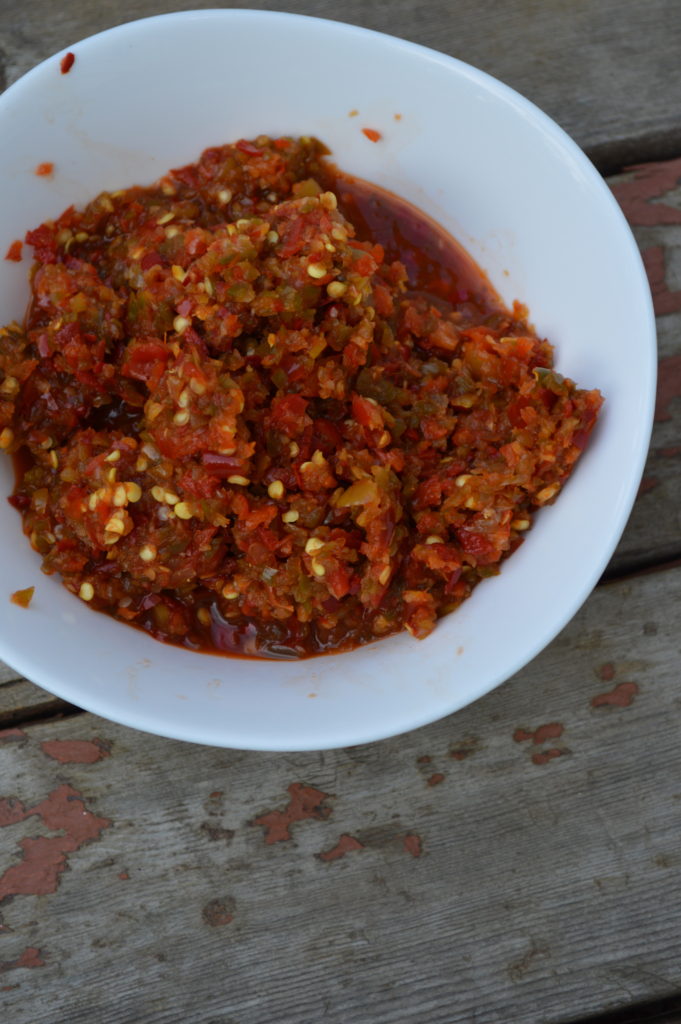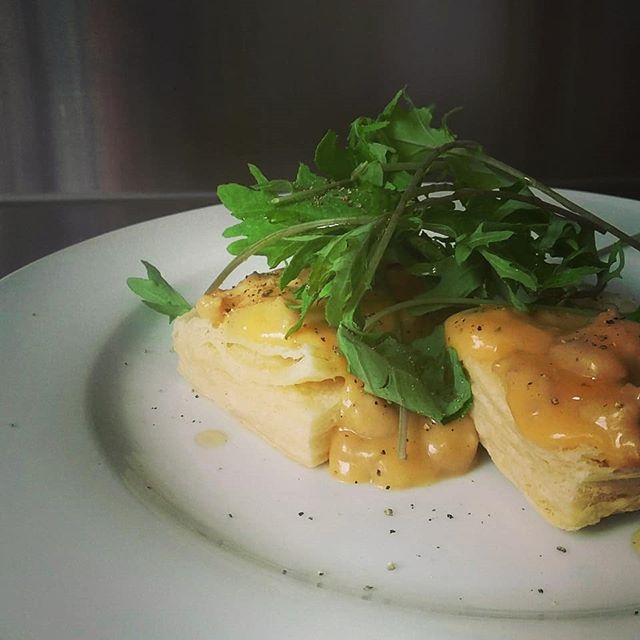In culinary school I was taught that beurre blanc, while not a mother sauce, is a sauce of great importance. Interestingly, though it bears resemblance to Hollandaise, it doesn’t have nearly the same number of variations or “lesser sauces”. In my culinary text there were only two beurre blanc variations: herb butter sauce (throw some chopped herbs into your beurre blanc), and beurre rouge (use red wine in the initial reduction instead of white).
In the Eleven Madison Park cookbook there are at least five variations on classic beurre blanc:
- Lemon Beurre Blanc. Using a lemon reduction instead of wine and vinegar. I haven’t made the EMP recipe yet, but it calls for an insane volume of 1 cup lemon
…
Continue reading.
Many years ago I posted about my default herb oil procedure, which I learned from The French Laundry Cookbook. In a nutshell:
- blanche herbs,
- shock in ice water,
- ring out as much moisture as possible,
- purée in a powerful blender with oil,
- let stand overnight (optional, but recommended),
- strain through a coffee filter.
Most of the herb oil recipes in The French Laundry Cookbook call for 4 cups of fresh herbs and 3/4 cup oil to yield only 1/3 cup herb oil.
I have sworn by this procedure for years. However recently I was reading the “Oils and Dressings” section at the back of the Eleven Madison Park cookbook, and while the Tarragon Oil follows the same … Continue reading.
With so many peppers coming from the garden and fermentation on the brain I wanted to try my own fermented chili paste. My recipe is very much like sambal in terms of ingredients and consistency, though sambal isn’t usually fermented. Korean gochujang is a fermented chili paste, but it includes a large proportion of starches like rice, soybean, and malted barley and is not a straight lacto-fermentation. So this preparation isn’t really of a traditional style, but it turned out quite good and I can definitely see it becoming a pantry staple.
One of the main reasons I think I’ll make this every year: you can process a large quantity of peppers very quickly. Simply chop coarsely, pulse a few … Continue reading.
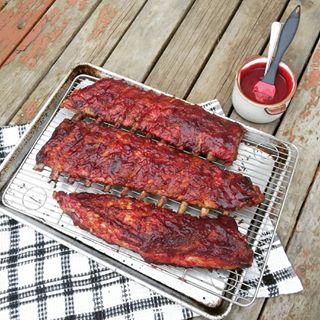
Sour cherries, being sour, are best cooked with sugar, so their most obvious applications are pies, pastries, compotes, and the like. This is a problem because sour cherry trees are prolific, and a man can only eat so much pie. Over the years we have struck upon other winning preparations for the efficient preservation and consumption of sour cherries, notably drinks like rum pot and cherry liqueur. But to really showcase the fruit’s versatility we’ve been eager for ways to use them in savoury meat dishes. Enter sour cherry barbecue sauce.
For most of my grown-up life my house barbecue sauce has been the Carolina-style recipe in Ruhlman and Polcyn’s Charcuterie. It is what I call a “pantry … Continue reading.
Sausage gravy ladled over biscuits is a classic comfort dish of the American south. While you can certainly use fresh, raw sausage in the preparation, it is also a good trick up your sleeve to deal with cooked sausages leftover from a brunch or barbecue.
Leftover sausages are often dry and a touch mealy. Just as you might flake leftover fish and mix it with mayonnaise, or shred leftover roast beef and heat it in barbecue sauce, coating leftover sausages in gravy reintroduces moisture.
One detail: to develop depth of flavour it’s a good idea to brown the crumbled sausage so that a good fond develops in the bottom of the pan. Once the butter and onions are added, use … Continue reading.
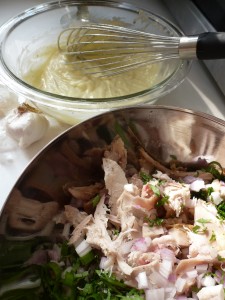 I am very interested in foods that I only knew in their industrial form for decades before I understood what they actually were. Mayonnaise may be the supreme example. It was a ubiquitous component of my childhood. I’ve written about this before, but I sat at many family suppers that featured three different mayo-based salads side by side by side, what I call the holy trinity of Ontarian side dishes: cabbage salad, macaroni salad, and potato salad.[1]
I am very interested in foods that I only knew in their industrial form for decades before I understood what they actually were. Mayonnaise may be the supreme example. It was a ubiquitous component of my childhood. I’ve written about this before, but I sat at many family suppers that featured three different mayo-based salads side by side by side, what I call the holy trinity of Ontarian side dishes: cabbage salad, macaroni salad, and potato salad.[1]
Mayonnaise was such a ubiquitous part of my youth it wasn’t until my mid twenties that it even occurred to me that mayonnaise must be made out of components.
So, what is mayonnaise? Mayonnaise is a sauce, an emulsion of oil and … Continue reading.
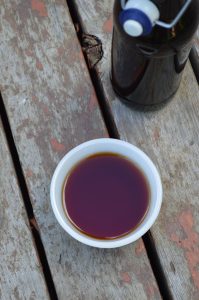 When you have hundreds of pounds of something you start thinking deeply on how you can preserve and consume the bounty. This time of year apples are the subject of those deep thoughts. Of course cider is the supreme way to preserve and consume apples, but I’ve been experimenting with some other techniques that involve cooking and reducing the fresh apple juice.
When you have hundreds of pounds of something you start thinking deeply on how you can preserve and consume the bounty. This time of year apples are the subject of those deep thoughts. Of course cider is the supreme way to preserve and consume apples, but I’ve been experimenting with some other techniques that involve cooking and reducing the fresh apple juice.
I got the idea from the cuisine of Modena. Obviously they have an abundance of grapes, and obviously the majority of those grapes end up as wine or liquor, but they also have a few preparations made by cooking and reducing fresh grape juice. The most famous is traditional balsamic vinegar, but there is also a … Continue reading.
There are many compelling reasons to never buy salad dressings from the grocery store:
- You almost certainly already have the ingredients in your pantry to make a good dressing.
- A good dressing can be made in less than 90 seconds. Actually you can make enough dressing for a few weeks in 90 seconds.
- There are weird things in store-bought dressings, like calcium disodium EDTA and acetylated monoglycerides. They also usually contain a good deal of sugar or glucose-fructose; not necessarily a bad thing, but a fact of which many people are unaware.
Invest is some quality oil and vinegar, then never buy a Kraft dressing again.
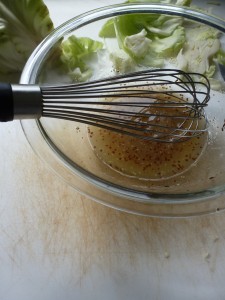
The simplest dressing to make at home is vinaigrette, which is a French diminutive … Continue reading.
The personal website of Edmonton chef Allan Suddaby
